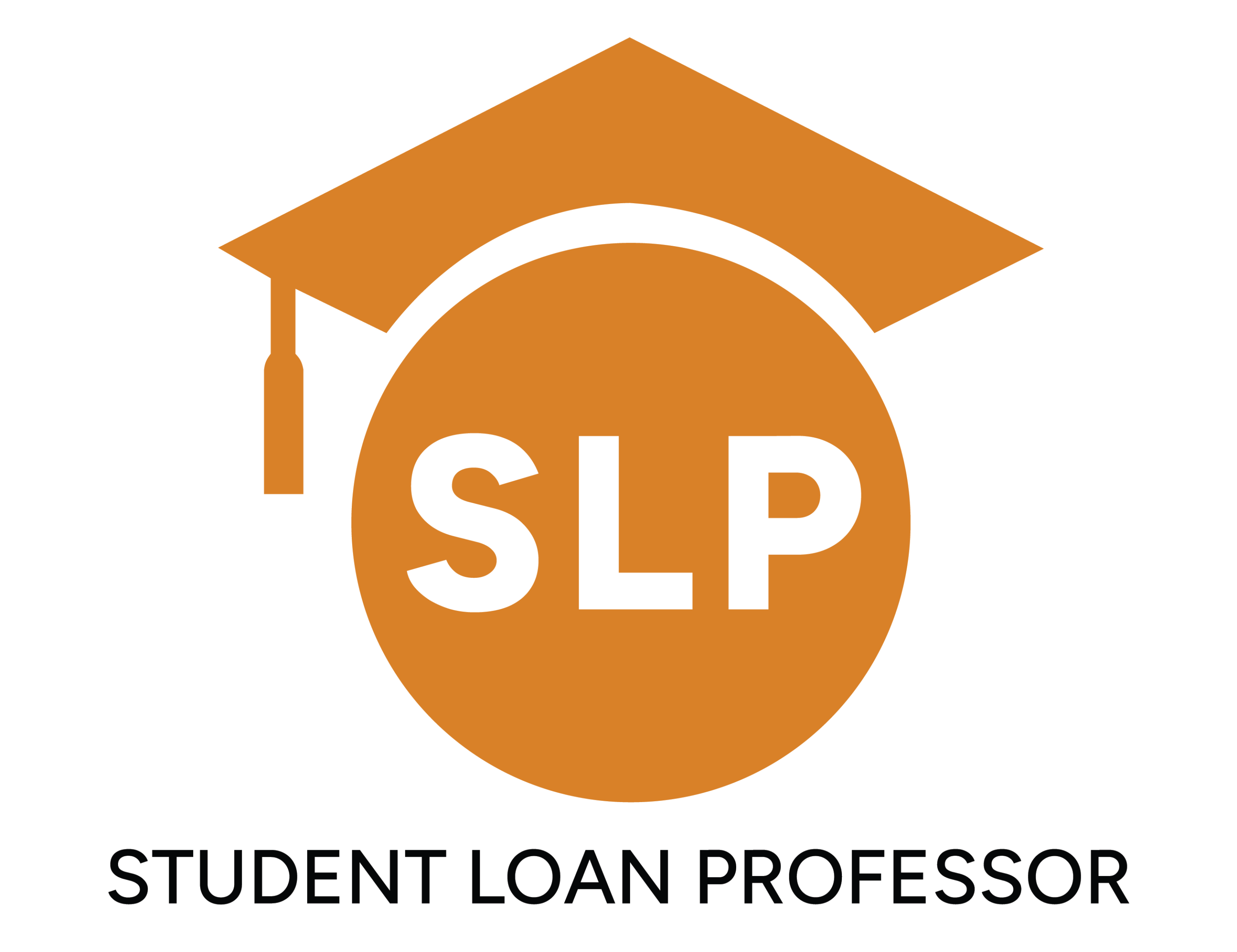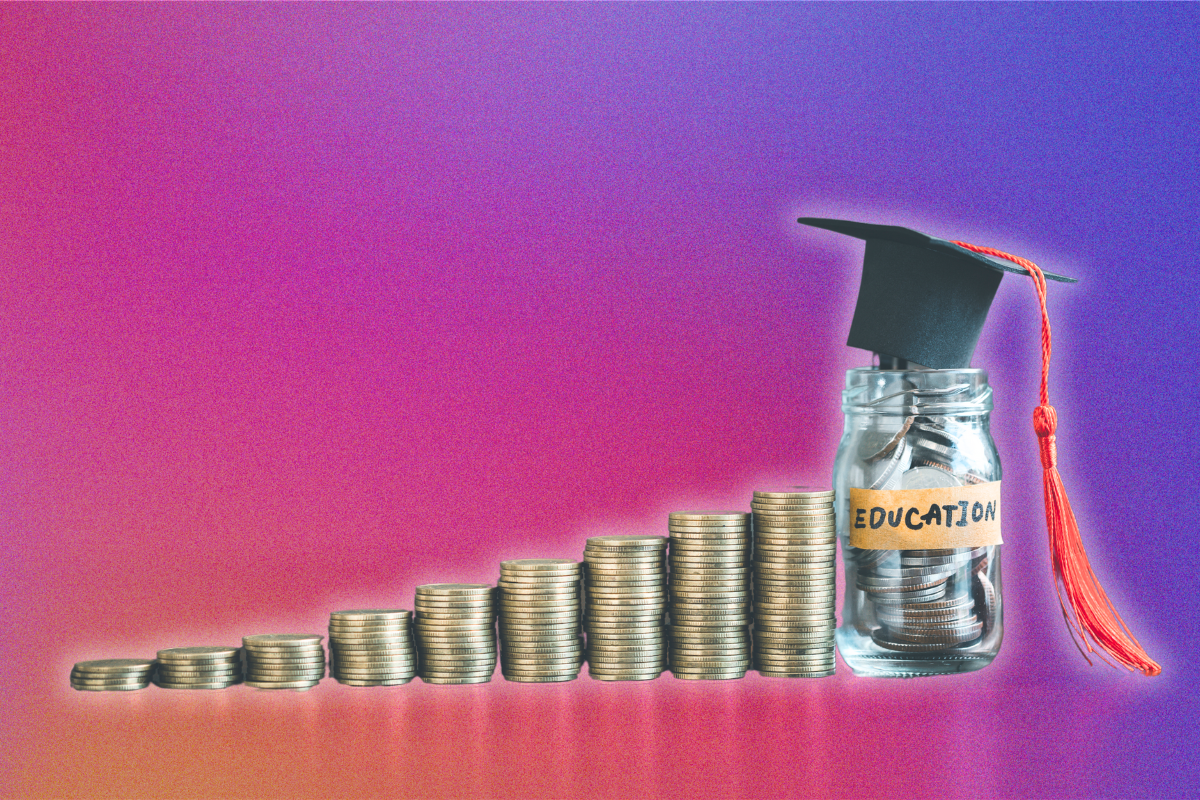Your student loan repayments are made up of two parts: the principal and the interest.
Each monthly payment covers a portion of both these parts, and your loan type, repayment plan, and interest rates determine the breakdown.
Understanding the split between your principal and interest is crucial because it determines how much money you pay over the life of your loan.
Besides these fundamentals, there are a few more things you should understand before formulating an effective loan management strategy.
Key Takeaways
- Federal loans offer flexible repayment plans and protections like IDR and forgiveness.
- Private loans have stricter terms, higher interest rates, and no federal protections.
- Refinancing can reduce interest rates but sacrifices federal benefits like IDR plans.
- Automating payments and using tax deductions helps manage student loan debt efficiently.
- Seek professional guidance to help develop a personalized repayment strategy tailored to your needs.
Federal Loans vs. Private Loans
Federal loans issued by the U.S. government typically feature flexible repayment options and protections, such as Income-Driven Repayment (IDR) plans and loan forgiveness programs.
Banks and credit unions issue private loans, which generally offer fewer repayment options and have stricter terms than federal loans. Income-Driven Repayment (IDR) plans cap federal student loan payments at a percentage of your discretionary income, typically ranging from 10% to 20%. Additionally, interest on private loans is based on your credit score, and there are no loan forgiveness options or federal protections.
The type of loan you have will determine your best repayment strategy.
Repayment Strategies for Federal Loans
Federal student loans offer a variety of repayment plans, including:
- The Standard Repayment Plan: Fixed monthly payments over 10 years. This means the least amount of interest paid over the life of your debt but higher monthly payments.
- Graduated Repayment Plan: Where payments start low and then gradually increase every two years. This is ideal for borrowers who expect a steady rise in income.
- Extended Repayment Plan: This extends the payment period up to 25 years with low monthly payments but an increased total interest.
- Income-Driven Repayment Plans (IDR): These plans tie your repayments to your income and family size, with the potential of having your remaining balance forgiven after 20-25 years.
Each of these plans has its advantages depending on your financial goals and current income. For example, IDR plans can be a lifeline if your monthly payments are too high. On the flip side, they also result in higher interest costs over time.
Impact of Interest Rates on Your Student Loan Repayments
The interest rate on your loan ultimately determines how much you end up paying. Federal student loans typically have fixed rates, while private loans can have both fixed and variable rates.
Understanding your loan’s interest rates is critical because small fluctuations will translate into thousands of dollars over the life of the loan. You can use the following formula to calculate how much of your monthly payment goes towards interest:
Interest = (Loan balance x Interest rate) / 12
How to Lower Your Monthly Student Loan Payments
Income-Driven Repayment Plans (IDR)
IDRs are designed to make federal student loan payments affordable by capping them at a percentage of your discretionary income, usually between 10% – 20%. These plans are:
- Income-Based Repayment (IBR): Here, your monthly payments will be capped at 10% – 15% of your discretionary income, with the potential for forgiveness after 20 – 25 years.
- Pay As You Earn (PAYE): This limits your monthly payments to 10% of your discretionary income, and any remaining balance is forgiven after 20 years.
- Saving on a Valuable Education (SAVE): This is similar to PAYE, but further includes unique terms such as applying to all borrowers regardless of when you took out your loan.
IDRs are a lifeline if your income fluctuates a lot or is lower than expected. They significantly reduce your monthly payments, making them more manageable, though your interest rates will be higher over the longer repayment period.
Refinancing Your Student Loans
Refinancing means securing a new loan with preferable terms to replace your current student loans. This gives you the option to lower your interest rates and can potentially reduce both your monthly payments and the total amount paid over the life of your loan.
Here are some factors you should consider to determine if refinancing is a good option for you:
- Check your credit score: A strong credit score (about 700 or higher) will help you secure better rates on your refinancing loan.
- Consider current interest rates: Compare the interest rates on your existing loans with the rates offered by your new lender. Even a 1% – 2% decrease can lead to significant savings over time.
- Loss of federal protection: If you have a federal student loan, refinancing with a private lender will mean losing access to benefits like IDR plans, forbearance, and loan forgiveness programs.
Loan Consolidation
Loan consolidation allows you to combine multiple federal loans into one with a single monthly payment. This comes with various financial benefits, including:
- Simplified payments: Consolidating your federal loans effectively reduces all your loans into one. You will no longer need to manage multiple loan servicers and due dates.
- Eligibility for more repayment plans: Consolidation may qualify certain federal loans for IDR plans and the Public Service Loan Forgiveness (PSLF) program.
- Extended repayment terms: Consolidating your loans can stretch your federal student loan repayment terms to a maximum of 30 years, significantly reducing your monthly payments.
However, if you’re considering consolidating your loans, you should also be aware of the drawbacks:
- Increased interest rates: Consolidating your loans does not lower the interest rates. Instead, the rate becomes a weighted average of your existing loan rates. Additionally, extending your loan repayment period during consolidation will allow you to pay more interest over time.
Paying Interest During Deferment or Forbearance
During deferment or forbearance, where your loan repayments are paused, often interest still continues to accrue. If possible, continue paying your interest to avoid ballooning your loan when your payments resume.
For example, after the pandemic pause, federal student loans began accruing interest on September 1, 2023. While the temporary White House safety net Student Loan on Ramp has shielded borrowers yet to sort out their loan payment, their interests have continued to build during the on-ramp increasing the amount they owe.
With the on-ramp slated to expire on September 30, 2024, starting October 1, skipping your loan payments could result in delinquency and even default.
Common Student Loan Payment Mistakes You Should Avoid
Ignoring Payment Assistance Programs
Federal assistance programs like forbearance, deferment, and loan forgiveness are designed to provide relief during financial hardships and to support specific professionals like teachers and public service employees.
Not taking advantage of these programs is one of the biggest mistakes borrowers make. Here’s what you need to know to make the most of them:
- Deferment and Forbearance: these programs allow you to temporarily pause your federal student loan payments for up to 12 months. Remember, however, that interest will continue to accumulate during this period, so it’s important to weigh the long-term consequences.
- Public Service Loan Forgiveness (PSLF): if you work in the public sector, you may qualify for loan forgiveness after 120 qualifying payments. However, you must be enrolled in an Income-Driven Repayment plan (IDR) to qualify.
Skipping or Missing Payments
Missing your monthly payments can have severe long-term consequences including:
- Credit score damage: A single missed monthly payment can drop your credit score by 90 to 110 points, negatively affecting your ability to secure credit in the future.
- Default: If you fail to make payments for an extended period (about 270 days), your loan goes into default status. This may lead to wage garnishment, tax refund withholding, and even loss of federal benefits.
- Increased interest and fees: Missing your monthly payments can also lead to increased interest rates and late fees, which put you even further behind in your journey to debt and financial freedom.
Note: After three and a half years of pandemic-related payment pause, federal student loan payments resumed in October 2023. But if you’re not up to date with your student loan repayment yet, you have until October 1, 2024, to get back on track; otherwise, you could face loan delinquency and default.
However, if you’re currently enrolled in the SAVE plan, the Department of Education has put you and 8 million other borrowers on an indefinite, interest-free payment pause from July 2024 after a series of lawsuits that have temporarily blocked SAVE.
Tips to Help Manage Your Student Loan Payments
Automate Your Monthly Payments
Automatic payments help make sure your loan repayments are never late, protecting your credit score and keeping you away from costly late fees. Depending on your loan servicer, automation can also earn you a small interest reduction.
Pro Tip: Always make sure you have enough money in your account on the payment date to avoid overdraft fees.
Review and Adjust Your Budget Regularly
Financial situations are always changing, and your budget should change and adapt to reflect that. For example, if your income increases, you may want to allocate more money toward your loan repayment to clear your debt faster. Conversely, if your income decreases, shifting to an IDR can help keep your monthly loan bills manageable.
Pro Tip: Allocate a portion of any pay increases, bonuses, or tax refunds to your loan repayment. Even small amounts can make a huge difference over time.
Use Employer Repayment Assistance Programs
Some employers offer student loan repayment assistance as part of their benefits package. Such programs may include employer contributions to your loan balance or further savings incentives. Take advantage of such programs to accelerate your debt repayment and save on interest.
Pro Tip: If your current employer doesn’t offer such benefits, consider negotiating it as part of your compensation package at your next job or pay review.
Use Tax Deductions for Your Student Loan Interest
Did you know you can deduct up to $2,500 in student loan interest from your taxable income? This deduction is available even if you don’t itemize your deductions, making it a valuable tool for lowering your tax liability while managing your loans.
Pro Tip: Confirm that you qualify for this deduction and make sure your loan servicer provides you with Form 1098-E, detailing how much interest you paid during tax season to take advantage of this deduction.
Refinance Your Loan to Get Better Terms
If you have a healthy credit score and a steady source of income, refinancing your student loan can be a smart way to secure better terms on your loan. Just be sure to evaluate whether losing access to federal protections like IDR and loan forgiveness is worth the trade-off first.
Pro Tip: Always compare rates and terms from multiple lenders before settling on a refinancing offer. Use tools like online calculators to see how much you’ll save and consider how such a move fits with your long-term financial goals.
Take Control of Your Student Loan Debt Today
Taking control of your student loan debt today through strategic management and utilizing repayment and forgiveness programs is a key step toward financial independence.
Yet, this is often easier said than done. As programs constantly evolve and grow in complexity, not to mention the conflicts that exist among lenders, servicers, and financial planners, ensuring you’re consistently making the best decisions for your financial future can feel overwhelming.
Thankfully, you don’t have to navigate this process by yourself — that’s where Student Loan Professor (SLP) comes in.
At SLP, we’re a full-service student loan advisory company committed to helping you take control of your student loans. We offer a variety of services, including personalized counseling and hands-on assistance to save you money and secure your financial future.
Contact our team today to learn how we can assist you in managing your student loans effectively.
Brandon Barfield is the President and Co-Founder of Student Loan Professor, and is nationally known as student loan expert for graduate health professions. Since 2011, Brandon has given hundreds of loan repayment presentations for schools, hospitals, and medical conferences across the country. With his diverse background in financial aid, financial planning and student loan advisory, Brandon has a broad understanding of the intricacies surrounding student loans, loan repayment strategies, and how they should be considered when graduates make other financial decisions.




